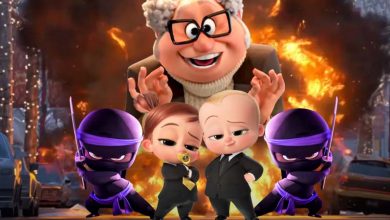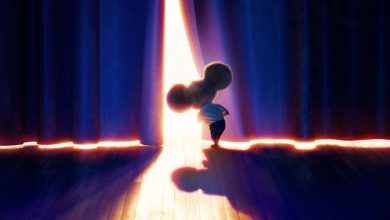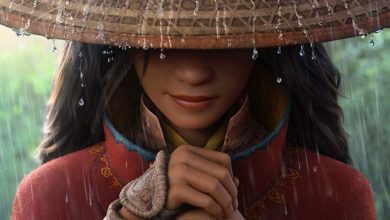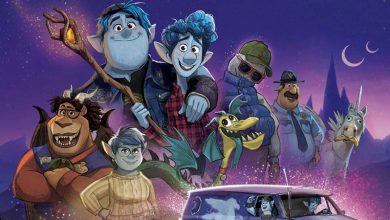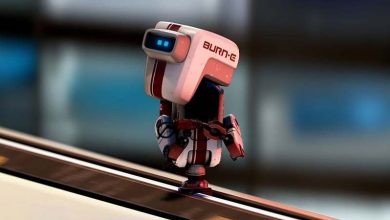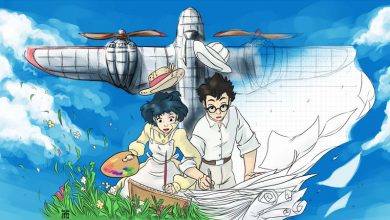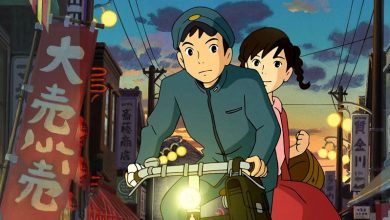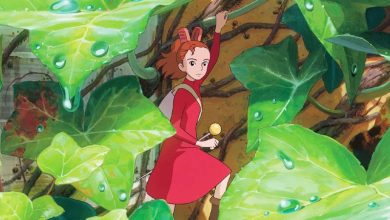Chage & Aska: On Your Mark (1995)
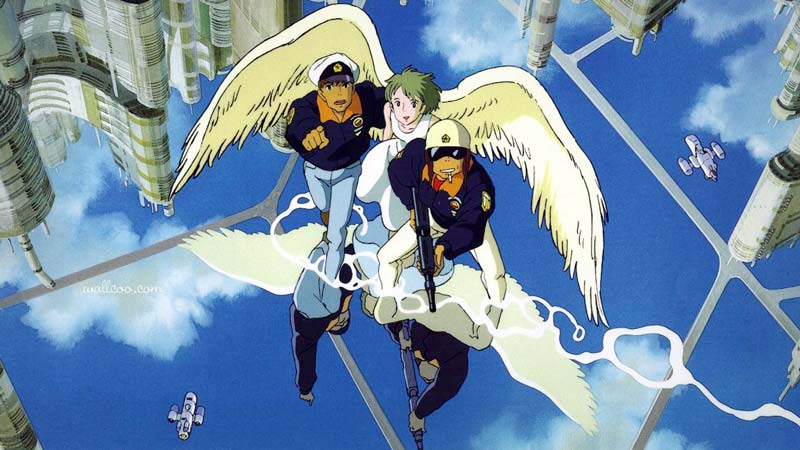
درباره موزیک ویدیو Chage & Aska: On Your Mark 1995
انیمه سینمایی کوتاه یا به عنوان بهتر موزیک ویدیو با علامت تو به انگلیسی Chage & Aska: On Your Mark که بصورت مختصر On Your Mark نامیده میشود. یک انیمیشن ژاپنی محصول سال 1995 به کارگردانی هایائو میازاکی می باشد. داستان این انیمه مربوط به آینده است و در مورد دو مرد جوان در تلاش برای آزادی یک فرشته که به هر قیمتی می خواهند این کار را انجام دهند . . .
دانلود نسخه کامل انیمیشن On Your Mark 1995
دانلود نسخه زبان اصلیتوضیحات مهم
سعی می کنیم به تدریج با تصحیح زیرنویس ها، گذاشتن کیفیت های بهتر و متنوع تر، افزودن PDF آموزشی، پادکست آموزشی، آموزش های ویدیویی و انواع محتواهای کمکی در کنار هر ویدیو فضای ایده آلی را برای یادگیری هرچه بهتر فراهم کنیم. وقتی ویدیوها برای شما جذاب باشه، محتوای آموزشی که کنارش ارائه میشه جذابه و توی ذهن میمونه.
حتما با شرکت در قسمت کامنت ها، به ما و دیگران و هم به خودتان برای درگیر شدن بهتر و یادگیری بیشتر کمک کنید. در واقع این مسیری که ما شروع کردیم بشدت به کاربرانش وابسته هست و خود کاربران هستند که در نهایت باعث پیشرفت خودشون و بقیه میشوند. و اینکه ما از نیروی متخصص و هرجور همکاری از طرف کاربران عزیز، برای پیشرفت این وبسایت و مسیری که پیش گرفتیم استقبال می کنیم
Info
Ghibli Experimental Theater On Your Mark (ジブリ実験劇場 On Your Mark, Jiburi Jikkengekijō On Yua Māku) is an animated music video created by Studio Ghibli for the song “On Your Mark” by the Japanese rock duo Chage & Aska. The song was released in 1994 as part of the single “Heart”. In 1995, Hayao Miyazaki wrote and directed the short film for the song as a side-project after having writer’s block with Princess Mononoke. The anime music video is non-linear, providing multiple reiterations and alternate scenes to depict the events. The music video added sound effects to the audio track, but contains no dialogue. Miyazaki purposely misinterpreted the lyrics to present his vision of a world where the surface becomes inhospitable and humans live in an underground city. He made the video cryptic to evoke creative interpretations among viewers.
The music video follows two policemen who raid a religious cult and find an angelic being only to have her taken away and confined to a laboratory. Haunted by the fate of the “angel”, the two men formulate a plan and break into the laboratory. Fleeing in an armored truck the three plummet into an abyss after trying to force past a police aircraft along a narrow suspended roadway. After a montage of the previous scenes, the armored truck suddenly rockets into an apartment complex, allowing their escape. The three escape to the surface, ignoring the radiation and danger signs, emerging near an encased nuclear reactor. The two men set the “angel” free and she flies off into the sky.
The music video was well-received and praised for its animation and attention to detail. It premiered as a short before Studio Ghibli’s Whisper of the Heart and has since been released on Laserdisc and DVD as part of All Things Ghibli Special Short Short. On July 17th, 2019, it was released on Blu-ray and DVD as part of the Ghibli ga Ippai Special Short Short 1992-2016.
Synopsis
The video begins with shots of a vacant village, overgrown with weeds, and the concrete sarcophagus of a covered-over nuclear reactor in the background. As the music begins, the scene changes to a sci-fi-style nighttime military-style police raid on a cult. Futuristic flying troop transports crash through the windows of a tower topped by gigantic neon-lit eyes and occupied by armed defenders. The policemen exchange gunfire and grenades with cultists whose hoods depict an enormous eye. As the victorious police begin to sort through the bodies of the cultists, two policemen find what appears to be a girl, lying unconscious, with large feathered wings on her back.
The scene changes again, now to bright daylight and blue sky. Two men are driving an old Alfa Romeo Giulietta Spider passo corto down an empty road. As one of the men helps the girl up, she spreads her wings and he holds her hands while she gains confidence. With a nudge she is airborne, but she seems hesitant and afraid as he lets go.
The scene changes back to the discovery of the girl in the tower, and the identity of the two men are revealed to be the same from the previous sequence. The two men carefully carry her out and offer her something to drink. A team of scientists wearing radiation suits arrive and quickly take the girl away.
The two men are haunted by the fate the girl will suffer and formulate a plan to rescue her. They break into the laboratory and free her from confinement, but the lab’s alarms are triggered. The three escape in an armored truck and drive along a narrow suspended roadway over what appears to be a domed city built in a crater. Police hovercrafts are in pursuit, and one of them comes very low to the roadway to block the fugitives’ truck. The roadway collapses when the protagonists try to force their way through, sending the truck plummeting. The winged girl refuses to let go of the hands of her rescuers, and the three of them fall into the abyss.
A brief montage of previous shots follows: the discovery of the girl, the girl flying through a blue sky, the two men rescuing the girl from the laboratory and stealing the truck, the truck plummeting amidst the wreckage of the roadway. But this time, inexplicably, the truck fires stabilizing thrusters and makes a short flight into the side of an apartment building. After their escape, the three are seen in an old Alfa Romeo Giulietta Spider passo corto racing through a dark tunnel underneath signs which bear radiation symbols and read (in kanji) “Beware Of Sunlight” and “Survival Not Guaranteed”, then finally they emerge into daylight. They drive past nuclear cooling towers and a sign which reads “Extreme Danger” and continue down the road.
One of the men helps the girl up, she spreads her wings and gives them a grateful smile; he kisses her hand, and the other winks in farewell. Soon, she is gone drifting upward into the sky. Briefly, a major urban cityscape is seen beyond the trees. From a bird’s-eye view, we see the shape of the car veering off the road and slowing to a stop in the grass.
Analysis
The deliberately non-linear, enigmatic and cryptic style of the music video was intended to stimulate the imaginations of its viewers and their interpretations of the music video.”[4] Miyazaki offered an interpretation of the angel as “Hope” and to protect hope could paradoxically mean “to let it go where no-one can touch it”.[4] Dani Cavallaro, an author of books related to anime, reflected on this by proposing that hope retains its purity and authenticity when it is ephemeral, evanescent and elusive.[4] Hope may cause exertion and possibly pain, but denying hope is to deny the feasibility or and vision it provides.[4] Miyazaki said that in the music video’s setting, humans live in an underground city after the surface of the Earth has been contaminated with radiation, creating a sanctuary for nature.[5] Miyazaki did not find this believable, though, as humanity would suffer on the surface instead.[5] Miyazaki intentionally misinterpreted the lyrics to reflect upon the vision of a world filled with disease and radiation and people’s reactions to that world.[5] Cryptically, he implied the two policemen might not be able to return to their old life, but offered no reason as to why.[5]
Cavallaro noted that the lyrics of the song include “ryuukou no kaze”, which translates to “flu” and is also an idiom for “the flu of fashion.” The author further interpreted it as “I always feel the urge to make a fresh start”[4] suggesting this could be the “bleak acceptance of the ideological and economic codes that mold our lives in accordance with the imperative of planned obsolescence, or as a hopeful embracing of the genuine prospects of renewal and change.”[4] Cavallaro suggested that despite the feminine appearance of the “angel”, it could be of a “preternatural order”, making gender or sex distinctions irrelevant.[4] Miyazaki referred to the angelic creature as “tori no hito” or “a bird’s person” which is the nickname of Nausicaä from his Nausicaä of the Valley of the Wind manga and film.[4] Cavallaro noted another visual correspondence to Only Yesterday with the oppressive urban environment and the freedom of open spaces.[4]
During their April 1999 lecture series on manga, anime and the works of Miyazaki at the University of Dallas, Pamela Gossin, Professor of Arts and Humanities, and guest instructor Marc Hairston, research scientist in the William B. Hanson Center for Space Sciences, discussed On Your Mark in their lecture, “In the Coda On Your Mark and Nausicaa, and drew parallels to the Nausicaä story, its titular character and its conclusion. Gossin and Hairston interpreted the release of the winged girl at the end of the video as Miyazaki setting free his character in a manner reminiscent of William Shakespeare’s symbolic liberation of his characters, through Prospero’s release of his servant Ariel in his play The Tempest.[6] The final volume of the Nausicaä manga was released in January 1995. Miyazaki started creating On Your Mark that same month.[3]
McCarthy highlighted similarities to different works and real life found throughout the film, remarking that the opening city sequence could be an homage to Akira or Blade Runner and the attack on the religious cult could be a reflection of the Aum Shinrikyo movement.[1] Nausicaa.net stated the production occurred prior to the police raid following the Sarin gas attack on the Tokyo subway in March 1995.[7] McCarthy also noted that the film’s scientists’ decontamination gear look like the hero of Porco Rosso and the rescue scene is reminiscent of Princess Leia in Star Wars.[1] The encased or “box” structure in the film is an homage to the Chernobyl Nuclear Power Plant which was entombed in concrete following the Chernobyl disaster.[1][4]
Miyazaki scholar Seiji Kanō observed that the urban settings have a China Town style and resemble the cityscapes of Mamoru Oshii’s Ghost in the Shell animated film adaptation, in production at the time. While Miyazaki has been non-committal about the nature of his winged entity in On your Mark, Kanō noted that the manga Seraphim: 266,613,336 Wings, an unfinished collaborative effort by Oshii and Satoshi Kon, with its Angel Disease theme, was still serialized in Animage at the time Miyazaki was creating On Your Mark in 1995.[3]

